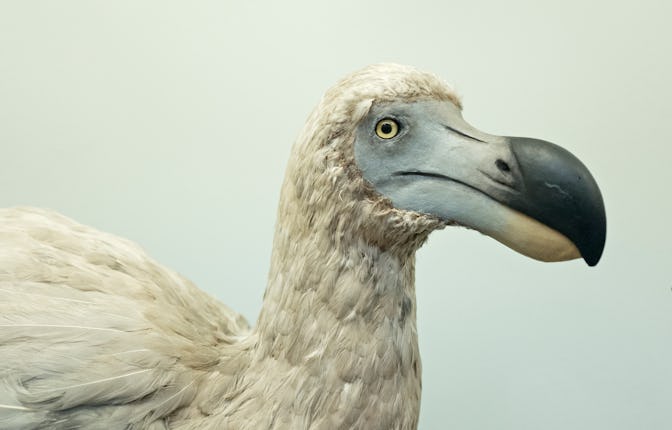Scientists think they can “Jurassic Park” the dodo
A genetic engineering startup is working to "de-extinct" the flightless bird, centuries after it disappeared.

Dodos may be extinct, but that isn’t stopping Colossal Biosciences — a biotechnology and genetic engineering company founded in 2021 — from working to genetically resurrect the endearingly flightless bird. So, could we see dodos dawdling around in their formerly natural habitat any time soon? Here’s what scientists are working on.
Colossal Biosciences, spearheaded by entrepreneur Ben Lamm and Harvard geneticist George Church, works to develop new technologies in conservation biology as well as human health care. They’ve already been hard at work bringing the extinct woolly mammoth and Tasmanian tiger back to life. Now, per a report from Vice, they’ve added the dodo to their list of candidates.
“I've always been fascinated with the dodo,” Beth Shapiro, an evolutionary biologist at the University of Santa Cruz, told Vice. “It’s the poster child, in a sad way, for how human habitat alteration can drive species to extinction.” Shapiro actually led the team that fully sequenced the dodo’s genome for the first time in 2002, and is now working on returning a “proxy” version of the dodo — or, a dodo that’s been reverse-engineered using the DNA of similar bird species — to what would have been its natural habitat in Mauritius.
“Once a species is extinct, it's really not possible to bring back an identical copy,” Shapiro said, noting how they were using genomes from some of the extinct bird’s close relatives, like the Nicobar pigeon and the Rodrigues solitaire to rebuild the bird’s genome. “The hope is that we can use, first, comparative genomics so we can get at least one, and hopefully more, dodo genomes that we can use to look and see how dodos are similar to each other, and different from things like the solitaire.”
While this whole situation seems copy-pasted straight out of Jurassic Park, scientists at Colossal Biosciences say they’re mainly focused on raising awareness around the struggle of currently endangered species — not on creating theme-parks for the ultra-rich to gawk at living history. “My approach to the dodo was always deeply about the plight of the species that are in danger of becoming extinct now,” Shapiro said. Indeed, increasingly more species are becoming endangered and going extinct as a result of human-caused climate change, so we’d be wise to pay attention. “Because everyone thinks of extinction and the dodo together, it really provides an opportunity to make people care a little bit more about what's going on. That is one of the many reasons why I'm so excited about this particular project,” Shapiro added.
Gilbert did admit that he would “absolutely travel to see a recreated mammoth,” per Vice — and let’s be real: If I could, I probably would too.